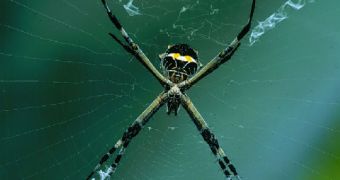There are spiders with an innate artistic sense. This is the case of the Argiope spiders, which have beautifully adorned webs with zigzag and spiral patterns. And the artwork is effective: insects are attracted by the fancy webs, but predators, too, as signaled by a new research published in Behavioral Ecology.
The meaning of the patterned web of Argiope has been a puzzle since the discovery of the species in 1889. Theories varied from the function of prey bite and predator deterrent predators to a warning sign for birds, to avoid their collision with the web, but everything has been pure speculation.
Now the team made of Ren-Chung Cheng and I-Min Tso from the University of Taichung, Taiwan, installed cameras on a forest edge meadow in the Nantou County (Taiwan) in front of webs of Argiope aemula (St. Andrew's cross spider, called so because of the white "X" woven on the web) and collected over 700 hours of video during the 2-month research. 56 webs were decorated, 59 were not.
The adornments had a deep impact: artistic webs captured 60% more insects, but also boosted the risk of predation: 70 % of the wasp attacks were on "artist" spiders.
"This suggests that decorations are acting as a lure, drawing the attention of both prey and predators. The increased risk of predation may explain why not all Argiope aemula spiders decorate," said Tso.
Similar trade-offs are widespread in nature: male chorus frogs chirp loudly at night to get a female and the calls also attract garter snakes; the same interaction occurs in Central America between frogs and frog-eating bats, but this is the first example of such a phenomenon in a structure built by an animal.
Still, why is the Argiope web so attractive?
"Many insects such as honey bees have an innate preference for symmetric patterns. It is very likely that the shape of the St. Andrew's cross gives a strong visual stimulus to insect predators and prey, but further neuroethological study is needed to clarify this mystery," said entomologist En-Cheng Yang of the National Taiwan University in Taipei.

 14 DAY TRIAL //
14 DAY TRIAL //